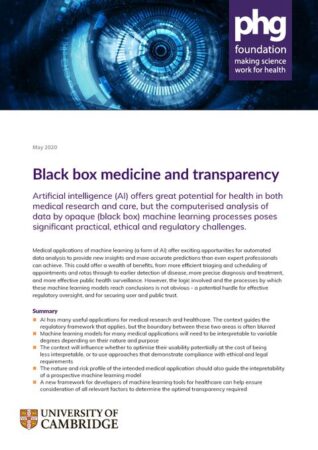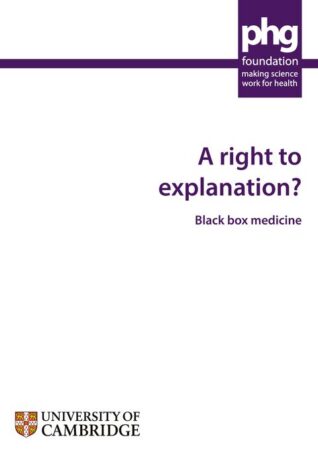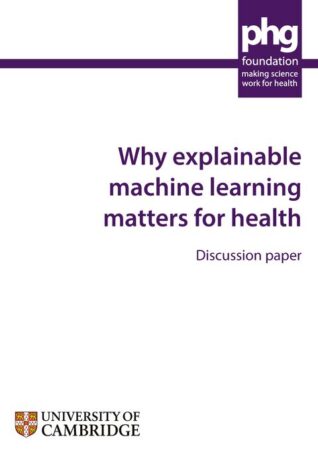Home Publications Reports Black box medicine and transparency
Black box medicine and transparency
Continued improvements in computing power and techniques means that health services are beginning to experience the benefits that machine learning has to offer. From supporting healthcare professionals in making diagnoses and determining risk, to optimising treatment decisions and patient management, further increase and expansion of machine learning in healthcare seems assured.
We were awarded seed funding from the Wellcome Trust to examine interpretability in the context of healthcare and relevant regulation. Our research, Black box medicine and transparency is a series of documents each examining a different aspect of the problem of human interpretability of machine learning in healthcare and research. In clarifying the requirements for transparency and explanation we aim to improve patient and public trust in these technologies and better ensure that the benefits for healthcare are realised for all.
Each report engages with a different issue of the black box problem.
Authors: Johan Ordish, Colin Mitchell, Hannah Murfet, Tanya Brigden and Alison Hall
- Interpretable machine learning
What is human interpretability of machine learning? How may machine learning models be
rendered human interpretable? - Machine learning landscape
Where is machine learning used in medical research and healthcare and where might it be used in the future? - Ethics of transparency and explanation
Why should machine learning be transparent or be explained? What lessons can be drawn from the philosophical literature on transparency and explanation? - Regulating transparency
Does (and if so, to what extent) the GDPR require machine learning in the context of healthcare and research to be transparent, interpretable, or explainable? - Interpretability by design framework
This new framework is intended to assist developers in understanding the interpretability of their machine learning models intended for medical applications. - Technical summary
A technical summary of the key findings of Black box medicine and transparency reports. - Roundtables and interviews
Information on the roundtables and interviews that informed the Black box medicine and transparency reports.




